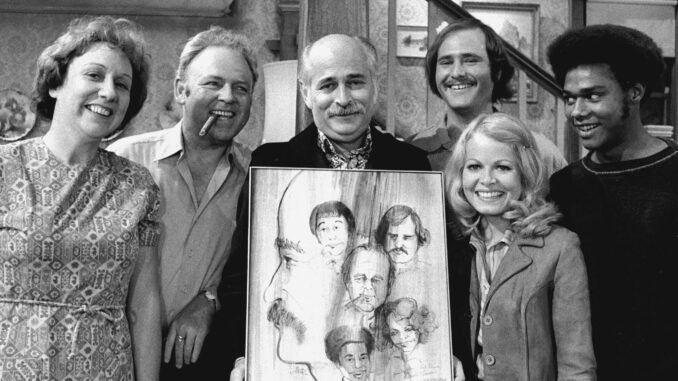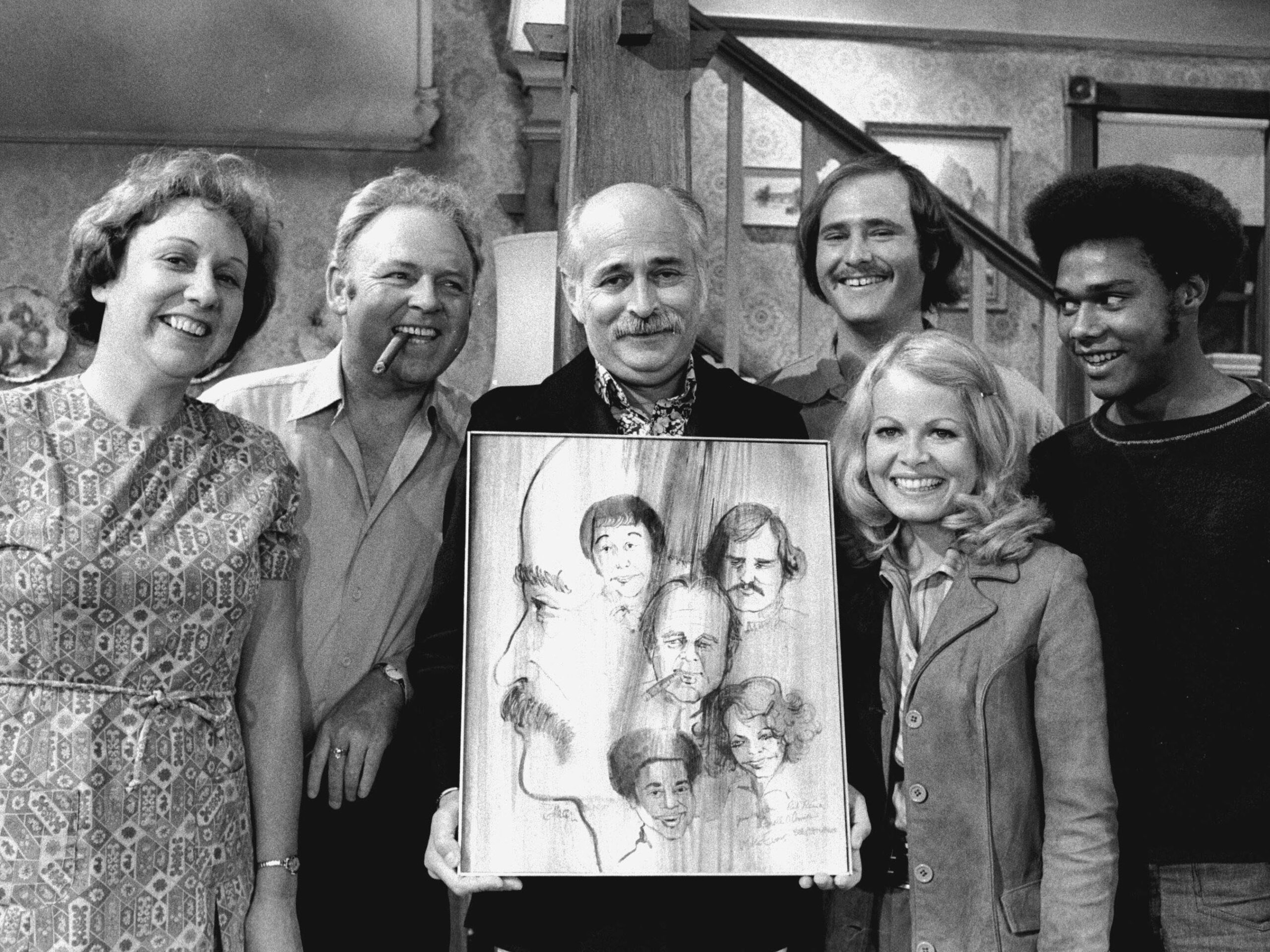
Few TV stories are as shocking as the one involving Sally Struthers, the actress who played the beloved Gloria Stivic on All in the Family. While fans adored her character, behind the scenes, Struthers was fighting her own battle — one that reportedly cost her $40,000 just to get out of the show.
In this deep dive, we’ll uncover why Sally Struthers wanted to leave, her complicated relationship with All in the Family creator Norman Lear, and how her bold move changed her career forever.
The Rise of Sally Struthers: From Unknown to TV Stardom
Before she became a household name, Sally Struthers was just another young actress trying to make it in Hollywood. Landing the role of Gloria Stivic in 1971 was life-changing. The show exploded in popularity, making her one of the most recognized faces on television.
But fame, as Struthers soon discovered, came with a price.
‘All in the Family’—A Groundbreaking Yet Grueling Experience
The series was revolutionary for its time. All in the Family tackled social and political issues that most shows avoided. It was bold, controversial, and brilliant. But for the cast — especially Struthers — it could also be emotionally draining.
The show’s focus often centered on Archie Bunker (Carroll O’Connor) and Edith Bunker (Jean Stapleton), leaving Sally feeling sidelined despite her talent. She wanted more depth, more screen time, and more opportunities to grow beyond Gloria.
Sally Struthers’ Discontent with Norman Lear
At the heart of the tension was Struthers’ relationship with Norman Lear. While Lear was celebrated as a creative genius, Struthers didn’t always see eye-to-eye with him. She later admitted she “wasn’t a huge fan” of how Lear handled certain aspects of the show — from the tone of the writing to how female characters were portrayed.
She reportedly felt trapped in a role that limited her creative range, and Lear’s strict control over the series only intensified her frustration.
Why Sally Struthers Wanted Out of ‘All in the Family’
As the series continued to soar in ratings, Struthers began to feel increasingly constrained. She wanted to pursue other projects — movies, stage work, and opportunities that could showcase her versatility. But Lear’s contracts were ironclad.
Her growing dissatisfaction reached a breaking point when she realized she was being typecast. Gloria had become both her blessing and her curse.
The $40,000 Legal Battle to Escape

Determined to move on, Sally Struthers sought to break her contract. But doing so came with a heavy financial toll. Reports claim she spent $40,000 — a staggering sum at the time — in legal fees and negotiations just to try and secure her release from the show.
Her fight wasn’t just about money or fame; it was about freedom. Struthers wanted control over her career, even if it meant taking on one of TV’s most powerful producers.
Norman Lear’s Response to Struthers’ Rebellion
Norman Lear, known for his uncompromising approach, wasn’t thrilled with Struthers’ attempt to leave. While he respected her talent, he reportedly viewed her move as ungrateful — especially since All in the Family had made her a star.
Behind the scenes, the two clashed over creative decisions and contract obligations. Their strained relationship became one of the most talked-about behind-the-scenes dramas in sitcom history.
Public Reaction: Fans Shocked by the Rift
Fans who adored Gloria were stunned when news of Struthers’ struggles surfaced. To them, she seemed like the sweet, compassionate daughter next door. Few could imagine the turmoil happening off-camera.
The revelation painted a different picture — one of a young woman fighting to reclaim her artistic identity in a male-dominated industry.
The Fallout: What Happened After She Left
Though Struthers eventually stepped back from All in the Family, her career didn’t vanish. She went on to star in the spin-off Gloria and appeared in numerous stage productions.
While Gloria never matched the success of its predecessor, it gave Struthers the creative control she had longed for. She also became known for her humanitarian work, particularly her advocacy for children in need.
Looking Back: Was It Worth $40,000?
So, was it worth it? Struthers has hinted over the years that, despite the emotional and financial cost, she doesn’t regret her decision. Her battle symbolized a woman’s fight for independence in an era when female actors had little say in their careers.
That $40,000 became more than just money — it was the price of self-liberation.
Hollywood’s Reaction: A Cautionary Tale
Struthers’ story sent shockwaves through Hollywood. For other actors, it was a reminder of how tightly studios controlled their stars. Many admired her courage, though some insiders quietly labeled her “difficult.”
In reality, she was ahead of her time — a woman refusing to settle for creative confinement.
Sally Struthers Today: From Sitcom Star to Survivor
Today, Sally Struthers is viewed with admiration for her resilience. She continued acting, appearing in shows like Gilmore Girls, and built a reputation as a warm, funny, and deeply human performer.
She often reflects fondly on All in the Family, acknowledging its cultural impact while being honest about her personal struggles during that era.
The Complicated Legacy of ‘All in the Family’
Despite the behind-the-scenes tensions, All in the Family remains one of the most influential sitcoms ever made. It broke taboos, sparked debates, and redefined television comedy.
For Sally Struthers, it was both a gift and a challenge — a role that immortalized her while testing her limits as an artist and individual.
Norman Lear and Sally Struthers: A Story of Creative Conflict
The Lear-Struthers relationship is a fascinating study in creative dynamics. Lear’s vision was revolutionary, but his rigid control often clashed with the aspirations of his cast. Struthers, unlike some of her co-stars, dared to push back — making her one of the few to challenge Lear’s authority publicly.
Their story reflects a larger struggle in Hollywood — the battle between creative genius and personal autonomy.
Lessons from Sally Struthers’ Bold Move
Sally Struthers’ experience serves as a timeless lesson for anyone chasing their dreams: sometimes, walking away from success is the bravest thing you can do.
She chose principle over comfort, independence over compliance — and in doing so, became a quiet pioneer for artists demanding more control over their careers.
Conclusion
Sally Struthers’ journey through All in the Family was anything but easy. Behind her smile was a woman determined to carve her own path — even if it meant paying $40,000 to break free. Her story is one of courage, conviction, and creative freedom.
While she may not have been “a huge fan” of Norman Lear, their friction produced some of the most unforgettable television in history. And in the end, Struthers proved that true success isn’t about staying comfortable — it’s about standing up for what you believe in.
